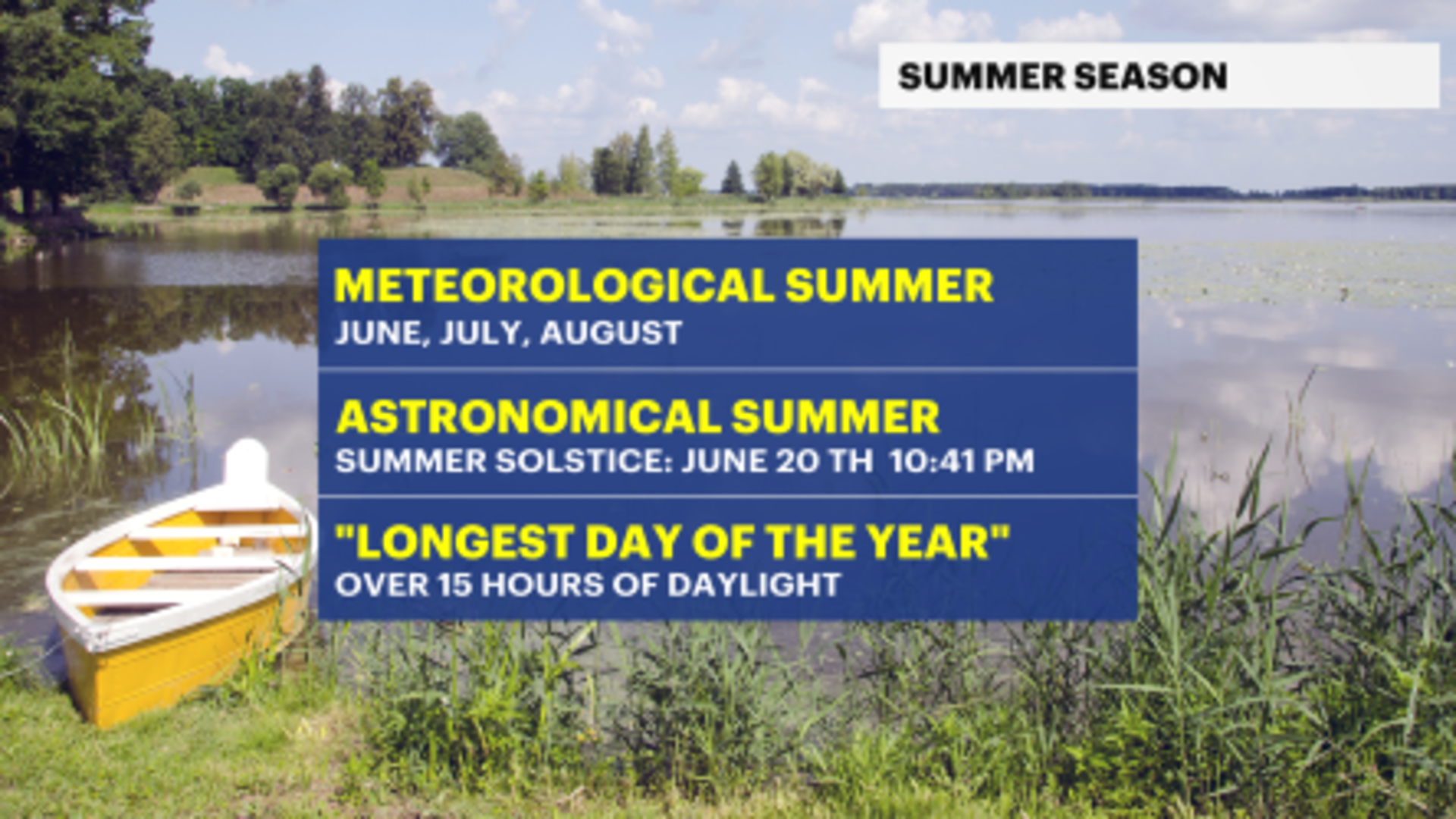Summer officially begins this Friday amid increased temperatures
Earth is now at the point in its orbit around the sun where the northern hemisphere is fully illuminated.
Share:
More Stories
2:43

Full moon, a meteor shower & a planetary conjunction - all starting this weekend
3ds ago2:08

Long Islanders take precautions for potential flooding
9ds ago1:59

Heavy rain, potential flooding raising concern on Long Island coastal towns
9ds ago
Gov. Kathy Hochul to declare state of emergency ahead of heavy rainfall
9ds ago
Blakeman addresses flash flood warning in Nassau County
10ds ago
News 12 weather blog
10ds ago2:43

Full moon, a meteor shower & a planetary conjunction - all starting this weekend
3ds ago2:08

Long Islanders take precautions for potential flooding
9ds ago1:59

Heavy rain, potential flooding raising concern on Long Island coastal towns
9ds ago
Gov. Kathy Hochul to declare state of emergency ahead of heavy rainfall
9ds ago
Blakeman addresses flash flood warning in Nassau County
10ds ago
News 12 weather blog
10ds agoAstronomical summer begins Friday with the Summer Solstice. The summer-like heat decided to jumpstart the season and there is plenty more of where that came from.

Earth is now at the point in its orbit around the sun where the northern hemisphere is fully illuminated. This is due to the fact that the Earth is tilted at 23.5 degrees. With more intense sunshine, our temperatures will heat up much faster. It takes a little while longer for water to heat up than the land, so for now we will all have to deal with cooler ocean and sound water.

The word “solstice” comes from the Latin word for “sun standing still.” To us on Earth, because we are tilted, it appears as if the sun has been rising higher and higher in the sky. It’s also been rising more to the Northeast and setting more and more to the Northwest. At midday, the sun is directly overhead the Tropic of Cancer (at 23.5 degrees North) instead of the equator, as it was on the first day of spring. The sun will now “stop” and turn around, heading back south again. From this point on, our days will be getting shorter as we head towards fall and then winter.

Sunrise and sunset times vary with latitude, but the earliest sunrise comes about a week before the solstice for most of us, on or near June 12-14. The latest sunset also occurs about a week after, near June 27. We see differences like this because of our axial tilt and also the fact that the orbit is an ellipse. Being an ellipse, the timing effect is lessened more now in the summer. In the winter, the latest sunrise and earliest sunset times are two weeks on either side of the solstice.
Don't worry too much about the exact sunrise and sunset times. The Summer Solstice is still the "longest day" of the year. Enjoy those 15 hours and 5 minutes of daylight.
More from News 12
1:57

Another beautiful, sunny day on Long Island
2:08

Long Islanders take precautions for potential flooding
1:59

Heavy rain, potential flooding raising concern on Long Island coastal towns

Gov. Kathy Hochul to declare state of emergency ahead of heavy rainfall

News 12 weather blog
